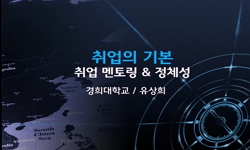This study aims at exploring the history of Korean calligraphy and Changma, Samman Lee's calligraphy by dividing calligraphy into schools of rational and emotional calligraphy. This approach helps to provide a more various and broader understanding of...
http://chineseinput.net/에서 pinyin(병음)방식으로 중국어를 변환할 수 있습니다.
변환된 중국어를 복사하여 사용하시면 됩니다.
- 中文 을 입력하시려면 zhongwen을 입력하시고 space를누르시면됩니다.
- 北京 을 입력하시려면 beijing을 입력하시고 space를 누르시면 됩니다.

창암 이삼만, 工拙을 벗어난 서예 = Changam, Samman Lee's Calligraphy beyond a Matter of Skillfulness or Un-skillfulness
한글로보기https://www.riss.kr/link?id=A82340559
- 저자
- 발행기관
- 학술지명
- 권호사항
-
발행연도
2007
-
작성언어
-
-
주제어
이성서예 ; 감성서예 ; 정체성 ; 이삼만 ; 愚拙의 美感 ; rational calligraphy ; emotional calligraphy ; identity ; Sungman Lee ; aesthetics of ugliness
-
KDC
640
-
등재정보
KCI등재
-
자료형태
학술저널
-
수록면
157-182(26쪽)
- 제공처
-
0
상세조회 -
0
다운로드
부가정보
다국어 초록 (Multilingual Abstract)
This study aims at exploring the history of Korean calligraphy and Changma, Samman Lee's calligraphy by dividing calligraphy into schools of rational and emotional calligraphy. This approach helps to provide a more various and broader understanding of the materials of calligraphy and presents a new way to understand the identity of Korean calligraphy. Changam, Samman Lee(1770-1847) possessed a very unique calligraphy style. This study investigates the commonalities and differences of Changam's calligraphy from his predecessors in terms of both his rational and emotional calligraphy styles. In the late Josun Dynasty, Changam freely pursued both rational and emotional calligraphy styles, not clinging to elaboration. His calligraphy practice and theory had two special aspects. His rational calligraphy style was shown in epitaphs or printed-style tablets, and his emotional style was written with printed, semi-cursive and cursive style. Both of his styles resulted from his unique consciousness of calligraphy. Changam's rational calligraphy style was based on his strict academic standards, serious consideration of process, and his endless endeavor to enter the ideal world of calligraphy. Meanwhile, his emotional calligraphy style was based on Jinhanwe's calligraphy which was different from Jindang calligraphy that had aesthetics of ugliness, pursuing strong strokes and a temperament overcoming the soft beauty. Changam's calligraphy presents Jinhanwe's style of strong, simple and honest strokes as well as reflecting the calligraphy trend of the late Joson Dynasty which focused on Jongyo, Wangheji. That is, his calligraphy crosses the boundaries between rational and emotional calligraphy and his aesthetics of calligraphy, as one of ugliness, shows another trend of Joson's calligraphy.
국문 초록 (Abstract)
본고는 서예를 이성파와 감성파로 구분하고 이를 한국 서예사와 창암 이삼만 서예에 적용해 고찰한 글이다. 이성과 감성의 시각으로 접근하는 것은 기존의 서예자료에 대한 다양한 접근과 ...
본고는 서예를 이성파와 감성파로 구분하고 이를 한국 서예사와 창암 이삼만 서예에 적용해 고찰한 글이다. 이성과 감성의 시각으로 접근하는 것은 기존의 서예자료에 대한 다양한 접근과 폭넓은 이해를 위한 한 방도이며, 한국 서예의 정체성을 이해하려는 새로운 방도이다. 이러한 차원에서 매우 독창적인 글씨로 알려진 창암 이삼만(1770-1847)에 대해 이성서예와 감성서예의 시각으로 그의 서예와 서론이 이전과 어떠한 同異點이 있는지에 관해서도 살펴볼 수 있겠다. 조선 말기의 창암은 감성서예와 이성서예를 추구하면서 공교에 구애 받지 않고 자유롭게 추구하려 하였다. 그의 많은 서예작품과 서론은 이 두 가지 측면을 보여주고 있다. 그의 이성서예는 비문이나 크고 작은 楷書, 편액 글씨 등에서 내용에 따라 다양하게 나타난다. 이에 비해 감성서예는 해서와 行書草書를 막론하고 다양하게 보였다. 창암의 이성서예와 감성서예는 그의 독특한 서예의식에서 비롯된다. 그의 이성서예는 엄격한 학서기준과 과정을 중시하고, 끊임없이 서예의 眞境에 들고자 엄청난 노력을 통해 나타났다. 이에 비해 감성서예는 당시 서예에서 추구하던 晉唐서예에서 벗어나 秦漢魏의 서예에서 古法을 추구하고, 연미함에서 벗어나 골기와 필세가 강한 愚拙의 美感을 추구하는 경향으로 나타났다. 따라서 창암의 서예는 조선 말기의 鍾繇? 王羲之를 중시하는 당시의 서예경향을 반영하면서도 한 단계 더 나아가 骨氣가 강하고 질박한 秦漢魏시기의 서예미감을 추구하였다. 이에 그의 서예는 이성서예와 감성서예를 넘나들었고, 그의 서예의식 은 愚拙의 美感을 보여주고 있다. 이것은 또한 당시 조선 서예가 추구하는 한 서예 경향을 보여주는 것이다.
목차 (Table of Contents)
- Ⅰ. 머리말
- Ⅱ. 工拙로 보는 한국서예의 큰 흐름
- Ⅲ. 창암 서예의 특징과 古法論
- Ⅳ. 맺음말
- Ⅰ. 머리말
- Ⅱ. 工拙로 보는 한국서예의 큰 흐름
- Ⅲ. 창암 서예의 특징과 古法論
- Ⅳ. 맺음말
동일학술지(권/호) 다른 논문
-
- 한국서예학회
- 김현숙(Kim, Hyun-Suk)
- 2007
- KCI등재
-
- 한국서예학회
- 김현봉(Kim, Hyun-Bong)
- 2007
- KCI등재
-
- 한국서예학회
- 송명신(宋明信)
- 2007
- KCI등재
-
- 한국서예학회
- 임창웅(Lim, Chang-Oung)
- 2007
- KCI등재





 스콜라
스콜라






